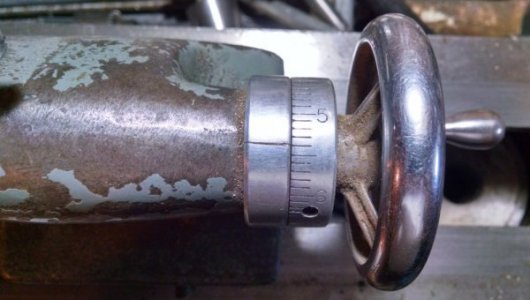- Joined
- Aug 23, 2016
- Messages
- 32
Hi,
Hopefully nobody thinks I'm posting too many threads. Lots of questions are coming in quick succession as I explore my new (to me) lathe.
The question I have today is can I add a graduated dial to the compound rest of a lathe? And by "add" I really mean add. There was never a dial included in the hand wheel system of the compound- only on the cross slide. Has anyone done this? Can it be done at all?
Sent from my iPhone using Tapatalk
Hopefully nobody thinks I'm posting too many threads. Lots of questions are coming in quick succession as I explore my new (to me) lathe.
The question I have today is can I add a graduated dial to the compound rest of a lathe? And by "add" I really mean add. There was never a dial included in the hand wheel system of the compound- only on the cross slide. Has anyone done this? Can it be done at all?
Sent from my iPhone using Tapatalk


